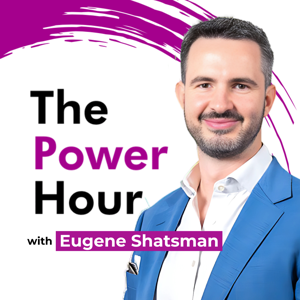Join Dr. Darryl Glover as he sits down with Dr. Melissa Barnett—an acclaimed optometrist, specialty contact lens pioneer, and founder of Alpine Blue Coaching—to uncover the secrets of mindful leadership in eye care. In this engaging conversation, they explore how intentional presence and self-awareness empower teams, why proactive wellness rituals can replace burnout, and how clear, compassionate communication transforms patient outcomes and practice culture. Whether you’re leading a bustling clinic or striving for a healthier work–life balance, Dr. Barnett’s insights will equip you with practical tools to elevate your leadership, inspire your staff, and reconnect with the joy of caring for others.
Topics Covered Why Mindful Leadership Matters in Eye CareLeading with Presence and Self-AwarenessMastering Communication as a Leadership PillarAlpine Blue Coaching in ActionAlpine Blue Coaching: Programs for Eye Care Leaders
Why Mindful Leadership Matters in Eye Care
High-pressure environment: A 2023 survey by Optometric Management found that over 68% of eye care professionals report moderate to high stress in practice operations and patient care.Team dynamics: Practices rely on collaboration between optometrists, technicians, front-desk staff, and managers. Leaders who model presence and empathy foster trust and improve staff retention.Patient outcomes: Studies show that patients of providers who demonstrate active listening and clear communication report higher satisfaction and adherence to treatment plans.“Leadership is not about being in charge. It is about taking care of those in your charge.”
— Simon Sinek
By embracing mindful leadership, optometrists can transform stressful environments into resilient, engaged teams. The result is a practice culture that attracts talent, delivers superior patient experiences, and sustains long-term growth.
Leading with Presence and Self-Awareness
At its core, mindful leadership begins with self-awareness. In eye care, clinicians must juggle exam lanes, optical dispensaries, patient education, and business metrics—often all at once. To cultivate presence:
Even a one-minute pause between patients to breathe deeply and recenter can reduce cognitive load and improve focus.Reflect through journaling or meditation
Writing down thoughts for five minutes after clinic hours or engaging in guided mindfulness exercises helps clarify priorities and emotional triggers.Solicit feedback
Invite team members to share observations on leadership style in one-on-one meetings. Honest insights can reveal blind spots and guide personal growth.“To me, mindful leadership means leading with presence, purpose, and compassion.”
— Dr. Melissa Barnett, Alpine Blue Coaching
Increasing self-awareness improves decision-making and models authenticity for staff, who in turn feel safer sharing ideas and concerns.
Mastering Communication as a Leadership Pillar
In eye care, effective communication shapes patient trust, adherence to treatment, and team alignment. However, 75% of professionals report anxiety around public speaking and presentations, indicating a need to strengthen interpersonal skills. Mindful leadership in communication involves:
By investing in communication mastery, practitioners elevate patient experience, strengthen referrals, and position themselves as thought leaders in the broader healthcare community.
Alpine Blue Coaching in Action
Alpine Blue Coaching Example
An eye care professional struggled with low confidence in both team leadership and public engagement. Despite strong clinical skills, she hesitated in staff meetings, avoided mentoring junior colleagues, and turned down opportunities to present at local optometric gatherings.
Coaching Intervention
Through a six-week program with Alpine Blue Coaching, she engaged in:
Outcome: Within two months, the practitioner:
This case exemplifies how a mindful, customized coaching approach can accelerate professional growth, enhance practice culture, and expand career opportunities.
Alpine Blue Coaching: Programs for Eye Care Leaders
Founded by Dr. Melissa Barnett—an optometrist and career coach with over two decades in specialty contact lenses and wellness advocacy—Alpine Blue Coaching offers tailored services for eye care professionals:
Eye care professionals interested in elevating their leadership, enhancing wellness, and mastering communication can learn more at AlpineBlueCoaching.com.



























